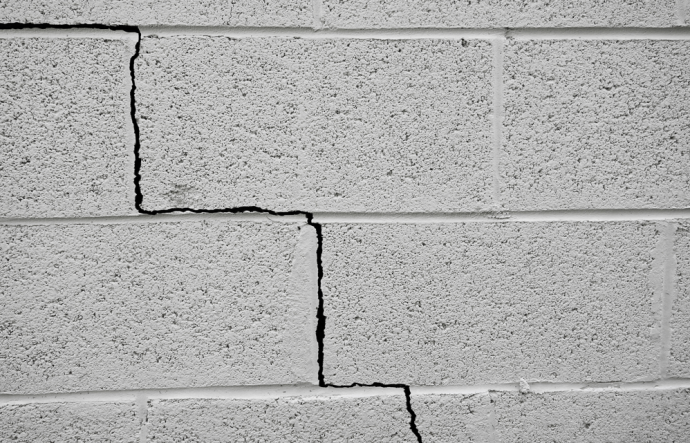Basements are constructed below the ground level and as such are susceptible to water problems. Oversaturated soil that is braced against the concrete walls of a basement will cause undue pressure on the walls and floor. This creates the perfect opportunity for water to penetrate the foundation and leave you with a leaky mess.
There are a number of common sources that will cause a basement to become wet:
- Cracked foundation – Through ground settling as well as the winter freeze and thaw process, the walls and floor of the basement will develop cracks.
- Window wells – Improperly installed window wells will allow the rain and snow to accumulate.
- Failed tiles – If the tiles are not properly seated and grouted, they will start to crack and leave ample room for wetness to encroach.
- Grading – If the contractor did not add positive drainage along the foundation, or if it has deteriorated over time, the slope of the land will actually encourage water to accumulate around the foundation instead of carrying it away.
- Gutters – Guttering can develop leaks or become clogged to the point that it will not successfully carry away the water. That means the water will run down the side of your house until it hits the foundation and start to cause problems.
There are some solutions to a wet basement:
- Waterproofing – Using specific techniques and materials the basement walls and floor can be sealed to prevent water infiltration.
- Crack Repair – If there are cracks in the foundation, they can be repaired either from the inside or outside, depending on the damage.
- Sump Pump – This is a mechanical device installed at the low point of the basement that will pump the water out of the basement back to the outside.
- French Drain – This is a trench holding a perforated pipe that will redirect the water. It is also known as a weeping tile, perimeter drain, or subsurface drain.
- Floor Drain – This is a drain placed at the lowest point to carry off waste water from leaks or from water heaters or other issues.
- Drain Tile – This is very like a French drain using perforated or flexible plastic pipe and is installed in the ground around the exterior of the foundation.
- Gutters and Downspouts – Make sure all the gutters are clear of debris and that downspouts point away from the foundation.
- Grading – Restoring positive draining slope.
If you are not sure if you have a need for foundation repair, here are some things to watch out for:
- Water stains on the floor and walls
- Musty or damp smell
- Flooding
- Signs of salt rising to the surface of the flooring
If you suspect you have water problems, you should contact a foundation repair expert. These professionals will be able to assess the situation and advise you appropriately. If there are problems, it is important to deal with them promptly to avoid mold, mildew and other more serious problems.
The foundation expert should give you an estimate of the extent, cost and time of the repairs. The workmen should arrive promptly on the appointed day. You should have a good explanation of what will be done. If there are surprises, they should be minimal and should be handled expeditiously.





